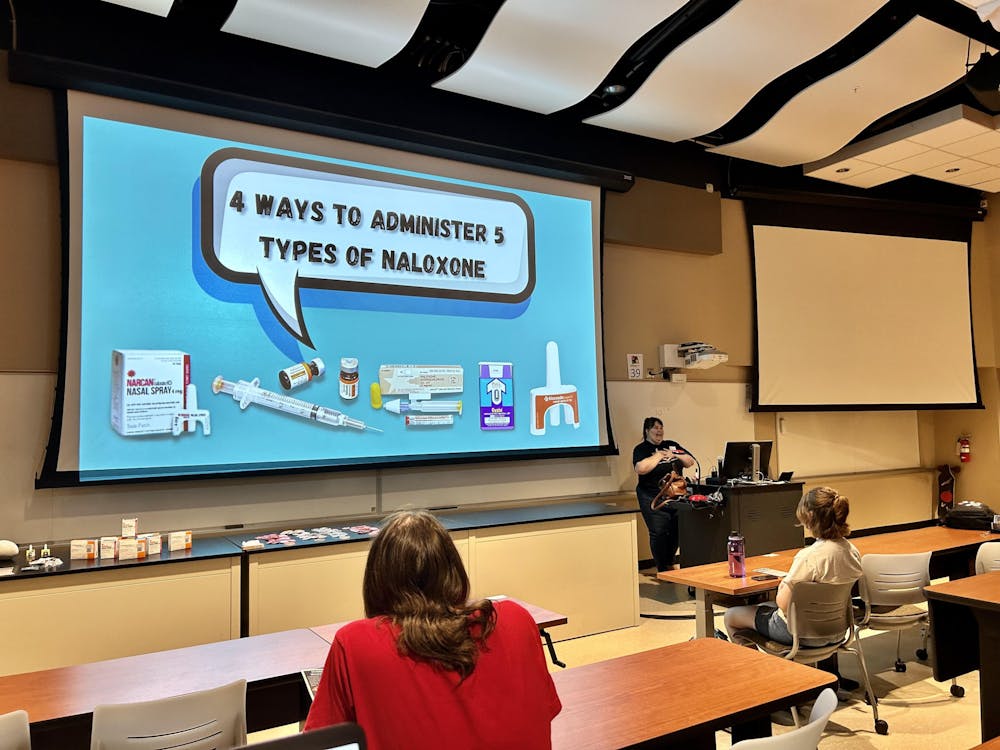In an emergency, emotions are high, adrenaline is running and people don’t have time to wonder where or how to get help. The Office of Student Wellness has answered the ‘where’ with the implementation of narcan stations across campus.
Miami University is one of five partners in the Oxford community trying to combat the opioid epidemic in the U.S. The group contains Trihealth, Talawanda School District, Oxford’s Coalition for a Healthy Community, Epiphany Community Services and the McCullough-Hyde Memorial Hospital Foundation.
Rebecca Young, director for the Office of Student Wellness, said Miami received a grant allowing them to develop a response to the national problem. Part of that grant will go toward examining how to reduce harm from substance use across all kinds of communities within Oxford, including the students.
“One of those strategies among many was to make sure that Narcan was available and readily available to students, to staff, faculty as well as other members in the community,” Young said.
The stations are specifically intended for Miami students, faculty and staff, but if the Oxford community needs help, there are several resources for them.
Young envisioned the narcan nasal sprays to be with automated external defibrillators (AED) on campus so that they are near other life saving devices. In a life-threatening emergency, people only have to think about one place to go.
Individual units of narcan are also available at the Office of Student Wellness, Young said, as well as fentanyl testing strips. Students just need to complete a short narcan training on how to use it and when.
“We want to make sure that we're saving lives,” Young said. “It's not that we're seeing an increase in overdoses, but what we have seen is in our region, Southwest Ohio, more and more common substances are being contaminated with fentanyl.”
Shelby Alford, a sophomore double major in psychology and philosophy, said she is not intimately involved with the student wellness narcan project, but she works closely with Rebecca Young and Title IX coordinator Cecilie McGhehey. It was an initiative she ran on during ASG elections, but Student Wellness was already working on it, so she joined them.
Alford said there will be seven stations on the Oxford campus and two others on the Miami regional campuses.
“As for an uptick in drug use, I would say no, but my perspective when it comes to prevention and response materials is that I would rather spend the money and it not be used than not spend the money and someone needs narcan,” Alford said.
Young Democratic Socialists of America (YDSA) brought in Harm Reduction Ohio to do a seminar focused on narcan training. They introduced four separate methods to administer five types of naloxone — the name for the drug that narcan is a brand for. Miami uses the naloxone nasal spray, Kloxxado.
Enjoy what you're reading?
Signup for our newsletter
During the seminar, Harm Reduction Ohio said studies have shown naloxone to be safer than ibuprofen.
August Daugherty, a sophomore botany major, attended the seminar because he remembers his hometown having a drug issue and was upset he couldn’t do anything about it.
“It's good to have the resources, [and] it's good to have the training information,” Daugherty said. “It's still coming out, [so] it's good to have the updated info.”




